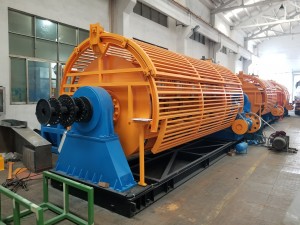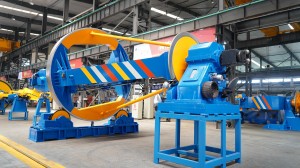Stranding machine is a kind of cable production equipment that can be used for twisting the core wires of cable products such as power cords, earphone cords, and electronic wires, etc. The main stranding principle is that when the copper wire passes through the twisting bow on the stranding machine, the twisting bow passes through the circular motion, so that each single copper wire is helically wound.

Stranded copper wire is where the largest amount of single copper wire is used. Copper wires of different specifications and different numbers are twisted together in a certain order and lay length to become a conductor with a larger diameter. The conductor is much softer than a single copper wire of the same diameter, resulting in a wire that bends better.
The twisting pitch of the stranding machine means that the single wire appears once at a fixed distance along the direction of the twisted wire, and the fixed distance apart is the pitch of the twisted wire (referred to as the twisting pitch). Another definition of twist pitch is that refers to the vertical distance that the twisted wire moves forward after every 360° of rotation along the twisting axis, the unit is mm.

The stranding machine is composed of main parts such as pay-off, traction, take-up, traction and transmission system and control system. In addition, there are also devices such as a branch board, a parallel die (also known as a press die), and a meter counter.
The twisted wire produced by the stranding machine is relatively large. Except for the central single wire, the pay-off reel for the rest of the single wires is placed in the pay-off part (such as a twisted cage), and the single wire is twisted around the central single wire through its rotation. layer. According to the number of twisted layers of twisted wires and the number of single wires in each layer, the general twisting machine is equipped with several (several sections) separately rotating pay-off parts to make twisted wires with different twist directions for each layer, so it is very important for production Stranded wires twisted in concentric layers are particularly suitable.
